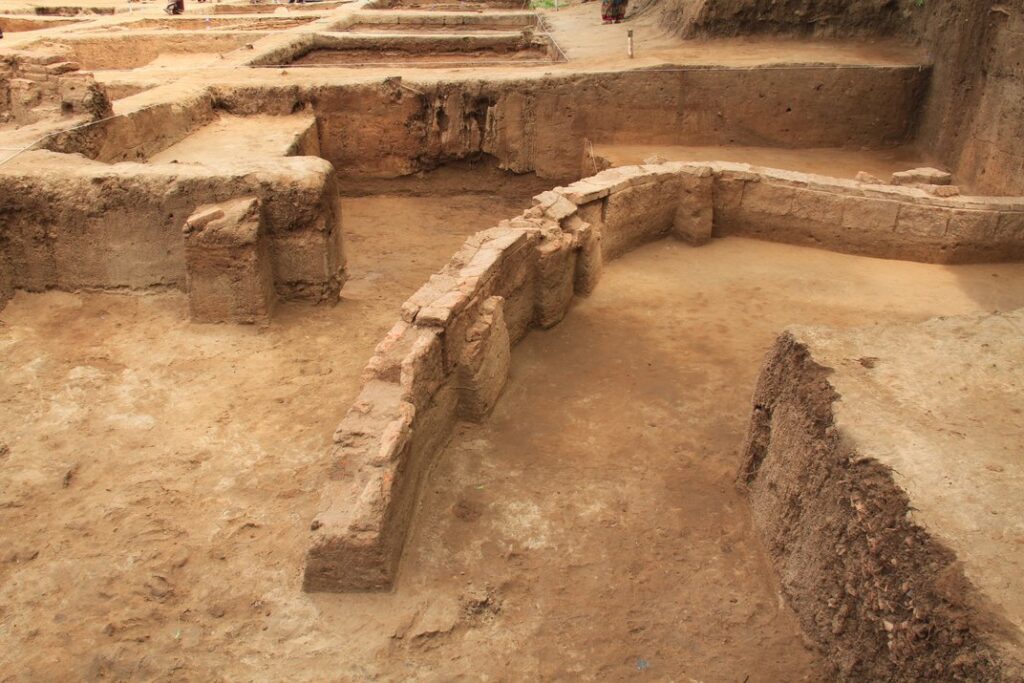Archaeologists Unearth Ancient Dagger Linked to Enigmatic Indian Civilization
Archaeologists working in the village of Konthagai in southern India have found a rusted iron dagger preserved in a burial urn alongside skeletal remains, the Times of India reports. The discovery is part of a major excavation effort in the state of Tamil Nadu that seeks to shine a light on the ancient Keeladi civilization.

Though the dagger’s 16-inch steel blade was rusted and broken in half, part of its wooden handle remained intact. R. Sivanandam, director of the Tamil Nadu Department of Archaeology, tells the Hindu that this type of weapon was used by warriors during the Sangam period, which spanned roughly the third century B.C.E. through the third century C.E.
The wood’s unusual preservation may allow researchers to precisely date the artefacts found at the site. Sivanandam says a lab in the United States will attempt to date the dagger handle.
Since the start of the digging season in February, archaeologists in Konthagai have discovered 25 burial urns. Some were filled with bones, weapons and other objects. Scientists at Madurai Kamaraj University in Tamil Nadu are conducting DNA tests on human remains.
As the Times notes, the researchers think that Konthagai was a burial site for the Keeladi civilization. Teams are also excavating ancient Keeladi sites in the villages of Agaram, Manulur and Keeladi—the place that gives the civilization its name.
Per the Tamil Nadu Department of Archaeology, carbon dating of artefacts dated some to as early as 580 B.C.E. The digs have yielded large numbers of cow, ox, buffalo and goat skeletons, suggesting agricultural activity by the ancient Keeladi people.
Archaeologists have also found structures with clay floors; brick walls; and post-holes, which may have held wooden poles used to support roofs. Artefacts recovered at the site show that members of the civilization played board games and inscribed letters on pottery using the Tamil-Brahmi script.

Many discoveries made in the area date to around 500 B.C., when an agricultural surplus allowed people to build urban centres in what’s known as the subcontinent’s “second urbanization.” (The name reflects a contrast with the much earlier “first urbanization” of the Harappan, or Indus Valley, civilization, which began around 2500 B.C.E.) While scholars previously believed that the second urbanization happened mostly along the Central Ganges Plain in northern India, the new evidence suggests a similar phenomenon occurred in the south as well.
Sivanandam tells DT Next’s J. Praveen Paul Joseph that findings at the Keeladi sites show evidence of ancient industrial production sites. Archaeologists have found spinning and weaving tools, cloth dyeing operations, brick kilns, and ceramic workshops.
In 2019, M.C. Rajan of the Hindustan Times reported that discoveries at Keeladi suggest the community that lived there—also referred to as the Vaigai civilization after a nearby river—may have descended from the Harappan civilization. As it declined, its people may have travelled south to start new lives.
The findings also offer material evidence about the Sangam period, which is known mainly for its Tamil literature.
Based on the archaeological evidence, some researchers now say the Sangam period began earlier than previously thought, around 600 B.C.E.
T. Udayachandran, secretary of the state archaeological department, told the Hindustan Times that the civilization was “an Indigenous, well developed self-sustaining urban culture with an industry and script, indicating that the people of that era were highly literate.”





